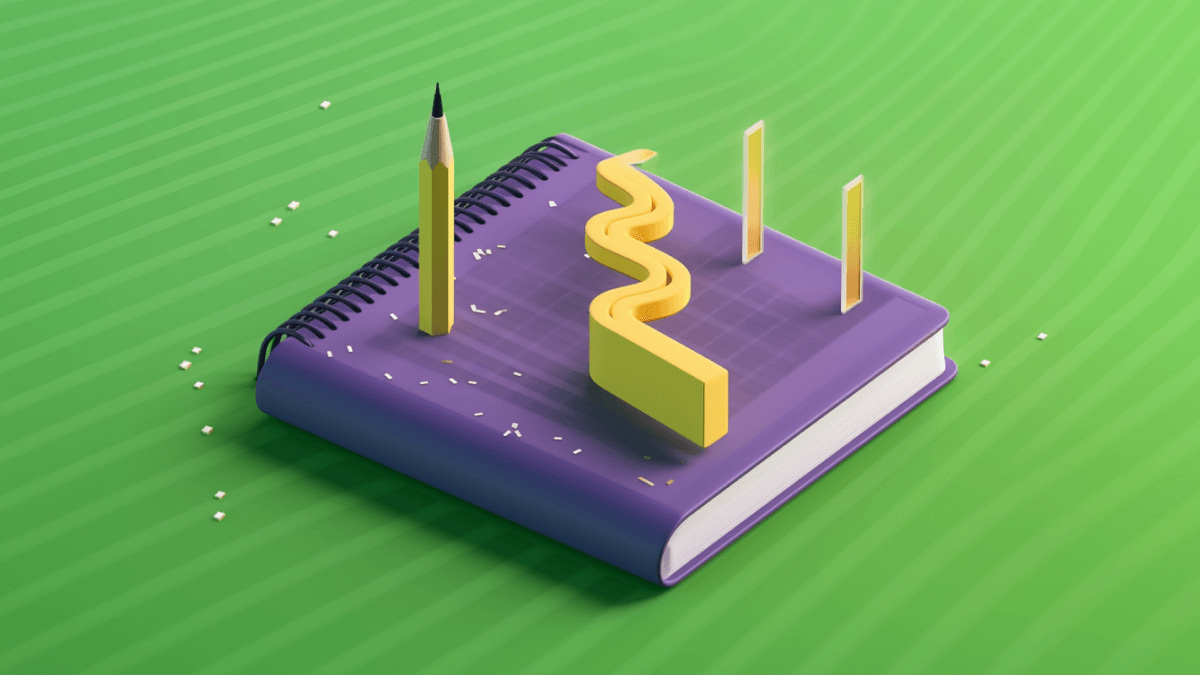The Power of Paper Trading: A Simulated Approach to Mastering the Markets

Trading on the financial markets is challenging and tricky. It requires mastering different tools and techniques. Inexperienced traders will likely face many complications when entering live trading, including trades execution, risk management, strategy development and emotional control. Coping with these issues under the pressure of the constantly changing market when live trading is nerve-racking and expensive. Seasoned traders are no exception: they also incur significant risks of losses while testing new ideas on a real trading account.
The good news is there is an excellent solution that provides all traders with a risk-free environment to test their strategies and improve trading skills: paper trading.
This article explores the concept of paper trading and its role in the world of finance. Both newbies and professionals should understand what paper trading is and use this unique mechanism on their way to success.
What is paper trading?
Paper trading is simulated trading that helps you learn the market, test trading strategies, and gain confidence without risking real money. The term “paper trading” refers to putting down data on paper as traders build their strategies and refine trading skills.
There is no need to keep records of various essential characteristics and actions using an actual pen and piece of paper. Today, many brokers offer their clients a paper trading account, or demo trading account, to test their trading ideas in a risk-free environment before jumping into the real market with actual funds.
Paper trades are very effective for both newbies and seasoned traders. Paper trading allows you to research the assets you want to trade, the trading platform you want to use, and the strategy you want to implement.
Why should I use paper trading?
Traders of all levels can benefit from considering paper trading for several reasons:
Safe way to test selected strategy and learn the mechanism of trades execution
Paper trading allows traders to act without fear of financial liability in case of losses as they trade with virtual money. So, traders can focus on their trading performance, including strategy effectiveness, and ignore distracting factors like the burden of losses.
Confidence builder
The more mistakes you make, the more you learn and the more successful and confident you become as a trader. Paper trading provides you with a virtual deposit, allowing you to execute numerous trades and observe the effectiveness of your chosen trading strategy. When paper trading goes well, it can significantly boost traders’ confidence. Increased confidence positively impacts traders' decision-making and overall trading performance when transitioning to real market trading.
A learning tool to evaluate and improve your trading approach
Paper trading provides a critical opportunity to analyze your trades, determining weaknesses and strengths. With paper trading, you can observe your trading approach holistically and make needed adjustments before entering the real market.

The difference between paper trading and live trading
Paper trading and live trading are two distinct trading approaches: the former enables traders to explore new ideas and evaluate current trading strategies by using virtual funds in a risk-free environment, while the latter provides real opportunities to earn money and build a successful trading career. Let’s see how the two differ.
The purpose
Paper trading is designed to help traders of all levels explore the markets, improve their strategies and ease the decision-making process in a risk-free environment. Live trading, on the other hand, is the pursuit of profit.
Market impact
In the live market, the execution of trades may cause inevitable price fluctuations, especially in less liquid financial markets. Since paper trading does not imply placing real orders on the live market, it does not create any market impact. Opening or closing positions in a paper trading environment does not affect actual price movements.
When using a paper trading account, you have no emotion as no real money is involved, and you fully accept the risks of losses without doubts or fear of failure. If you lose, you can just reset your account. This lowers your emotional scale.
Unlimited number of trades
Paper trading enables traders to execute an unlimited number of trades. Traders have no PDT restrictions or constrained buying power, they always have the possibility of performing trades in any situation, despite mistakes.
Full-body approach
The idea of having multiple trades in your back pocket allows you to evaluate your entire trading approach from a holistic perspective. You have an opportunity to step back and see the complete picture of many performed trades if you are on the winning side, or if the risk-reward ratio is practical. Instead, with a limited number of trades on the live account, you make every effort to win each trade and concentrate on it too much. This makes it difficult and takes more time to assess the effectiveness of your trading system.
How to get the most out of paper trading
To maximize the benefits of paper trading and transfer all valuable aspects of it into the live market, traders should consider the following advice:
- Set realistic goals
Establish goals for paper trading. Decide if you will test your trading strategy, try new tools, or if you want to refine your trading skills and improve your decision-making process. When you have clearly defined goals, it’s easier to concentrate on certain things while paper trading.
- Treat paper trading seriously
Treating paper trading as live trading and taking virtual money as real is crucial. Traders should develop a disciplined mindset even when trading on demo accounts. Since paper trading doesn’t involve emotions, your serious approach will help you grasp and experience actual market conditions better.
- Keep records of your actions
Tracking your trading activity is vital as it enables traders to analyze their performance comprehensively. When recording details of your paper trading, including entry and exit points, trade duration, position size, and results, you collect all the necessary data to evaluate the effectiveness of your trading approach and learn from mistakes. Consider using spreadsheets or trading journals to track your trades.
- Replicate real market conditions
When you practice paper trading, it’s essential to replicate real market conditions as closely as possible. Traders should use the same trade size and follow determined timeframes as they would choose in live trading. You also need to consider such factors as market liquidity, slippage, possible requotes, broker’s commission fees, and spread size. Implementing these factors enhances paper trading and allows traders to better simulate the challenges and opportunities they face in live trading.
- Try various strategies
There is no better way to test new trading strategies than paper trading. This type of trading enables users to try their ideas in a risk-free environment without potential responsibility and unaffordable losses. By testing different approaches, you can learn what works best for you and your trading style by identifying the strengths and weaknesses of each strategy.
- Learn how various trading orders work
Paper trading provides traders with an excellent opportunity to become familiar with various trading orders. This type of trading allows you to execute orders under different market conditions. You can observe the functionality of implemented orders and explore their influence on your trades. By placing orders in paper trading, you can improve your order entry methods before risking real money.
Pitfalls of paper trading you should be aware of
It's clear that paper trading is an efficient and rational tool, and that its advantages absolutely outweigh its disadvantages. However, there are some limitations to paper trading that you should be aware of:
- Paper traders do not experience the hidden costs associated with live trading, such as brokerage fees, commissions, and other unforeseeable expenses that can impact actual trading profits and losses.
- Paper trading doesn’t cause real emotions, making it challenging to develop a disciplined mindset. Live trading scenarios can sometimes be very rough, especially when you have real money at stake.
- Paper trading may not fully replicate the order execution experience regarding speed and accuracy. It can be challenging to consider factors like slippage, bid-ask spreads, and market liquidity, which can impact the real-life execution of trades.
- Success in paper trading can create unrealistic expectations when traders move to live trading. So, traders should take into account that the results of live trading are unlikely to be identical to paper trading outcomes.
Bottom line
To sum up, paper trading is a unique and safe way for traders of all levels of experience to refine their trading skills, improve strategies, and test new ideas without fear of actual failure before implementing them in live trading. Market simulation in the form of paper trading allows traders to build a solid foundation of knowledge and experience and gain confidence before moving on to live trading. However, traders should stay mindful of some drawbacks of paper trading, including a significant lack of emotional investment, which can come back to bite you later.
FAQ
Can I earn with paper trading?
No, you cannot earn actual money with this type of trading. Paper trading accounts provide traders with simulated market reality to test trading strategies and improve their trading skills. Gaining real profits or incurring actual losses is impossible, as paper trading involves virtual funds designed for learning and practice purposes.
Do beginners need paper trading?
No doubt, novice traders can gain valuable experience from paper trading. This risk-free trading practice offers traders opportunities to familiarize themselves with trading concepts without pressure and tension. You can explore financial markets, settle the decision-making process, become more confident, and refine your trading skills.
Are the results in paper trading the same as actual trading results?
Paper trading is a simulated practice where the outcomes of executed trades have no real consequences. Thus, traders do not experience the same emotions as in live trading. Trading with a real account can cause various unpredictable issues of a psychological nature, that are very difficult to foresee while paper trading. Moreover, there are differences in order execution due to the lack of access to the interbank market. Live trading results can therefore be very different.




